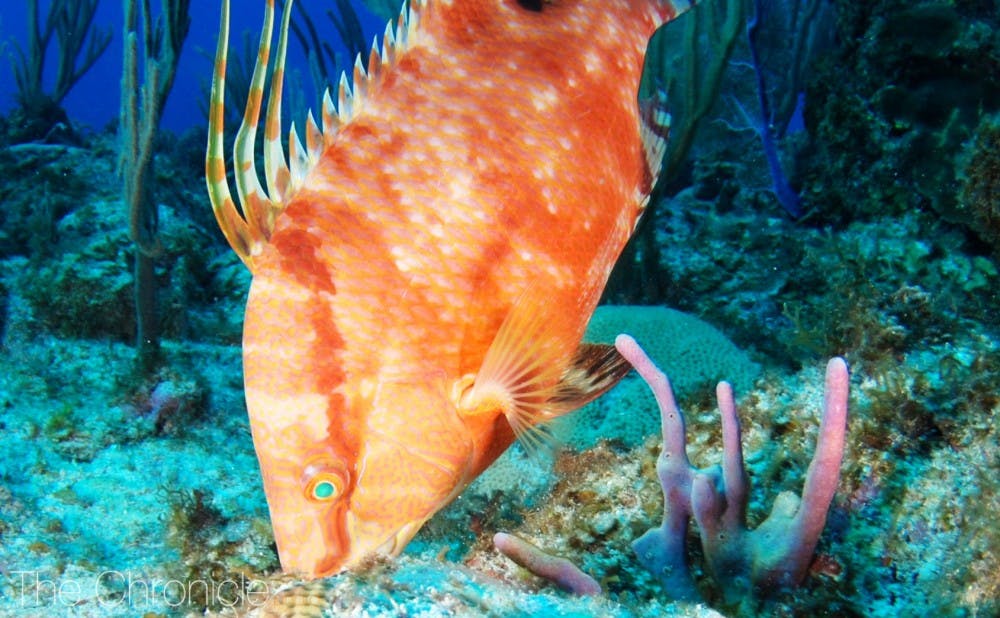The hogfish can not only change the color of its skin but is also contributing to changes in scientists' understanding of light sensory systems.
A recent Duke study showed how these fish—which have learned to survive by either blending in or standing out from their surroundings near the ocean floor—sense light with their skin. The hogfish’s ability to imitate the appearance of its surroundings is imperative to its survival, and it could potentially be an asset to human life as well.
“There isn’t a lot of research on this animal, but its incredibly important to our society,” said Lori Schweikert, a postdoctoral fellow the Sonke Johnsen Lab. “We’ve got to shine a light on it, no pun intended.”
Schweikert began her journey with the hogfish when she hooked one while fishing in the Florida Keys.
“When I picked the animal up I saw that the skin that had been facing the boat [deck] changed color to match the color and pattern of the hull,” she said.
She explained that although this color change was likely due to temperature and pressure at that time, it sparked her interest in researching the hogfish.
Currently, Schweikert’s research involves identifying and deconstructing the light-sensing system of the fish. Although this process is different from how a retina in the eye senses light, the hogfish’s skin can detect and react to light through the dispersion and aggregation of pigment in the cells.
This fish—with similar abilities to octopus, cuttlefish and chameleons—can dynamically change the color of its skin to hide from predators, capture prey or communicate with other hogfish.
Schweikert explained that the hogfish has “a very wide range of their ability to change color," as it can assume a lighter color when near a sandy background or a darker shade when near rocks. Not only can the fish use color as a camouflage mechanism, but they can also display bright colors in attempt to deter predators or change color for social signaling.
“It is a very dynamic process. They’re using their color change for different reasons at that time of what they’re doing, but we don’t know if it is voluntary or not,” Schweikert said.
Currently, the hogfish are primarily fished for recreational and commercial purposes. Its color-changing ability, however, may become useful to understanding how to more effectively build solar panels and other light-sensing systems. She plans to continue research to understand why the hogfish’s skin can sense and react to light.
“The bigger thing is our new understanding about these light sensing systems and how they’re designed,” Schweikert said. “We could translate that into new technology.”
Get The Chronicle straight to your inbox
Signup for our weekly newsletter. Cancel at any time.

